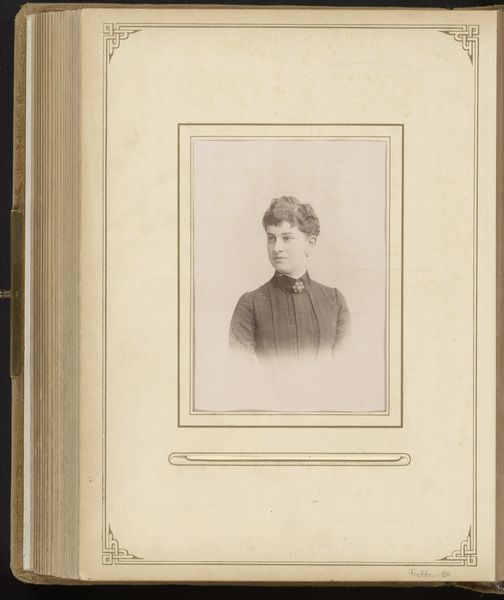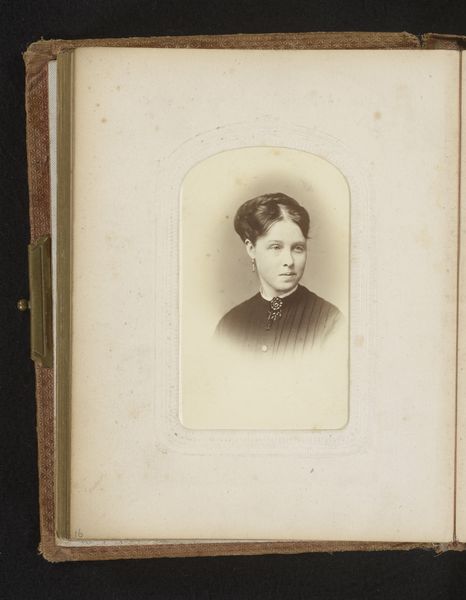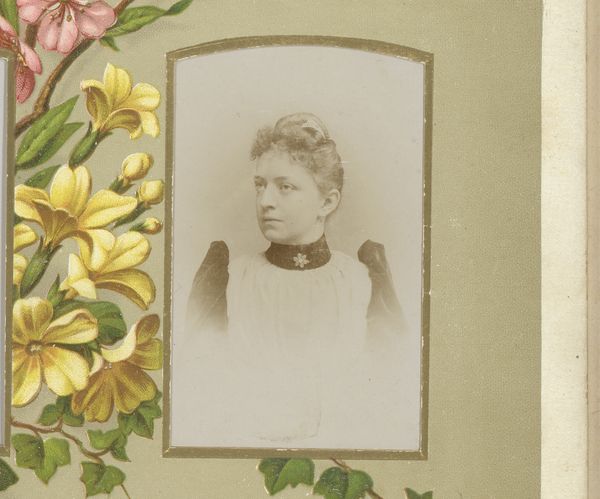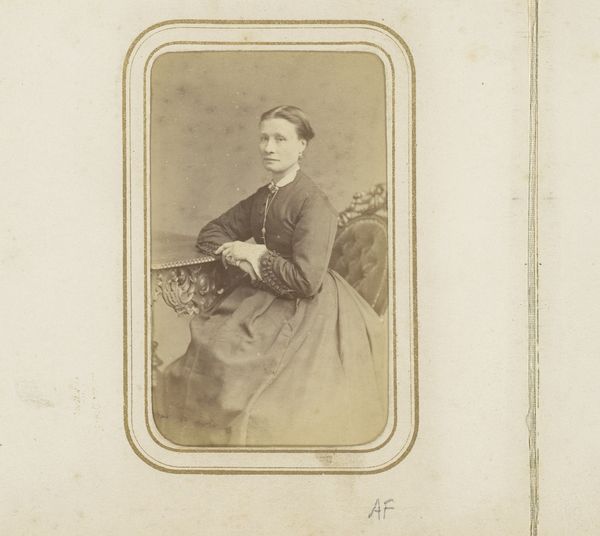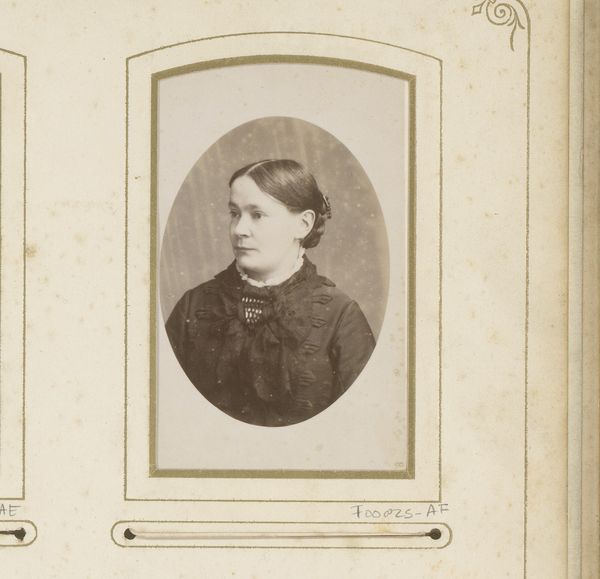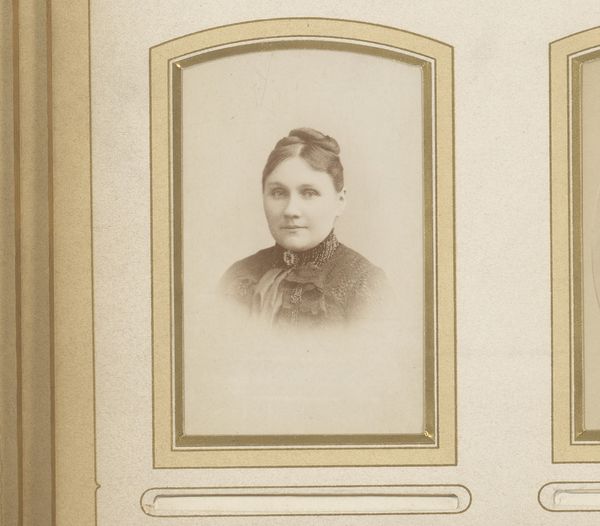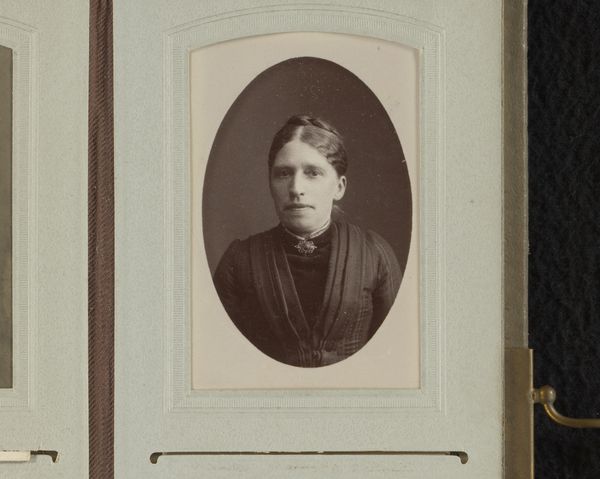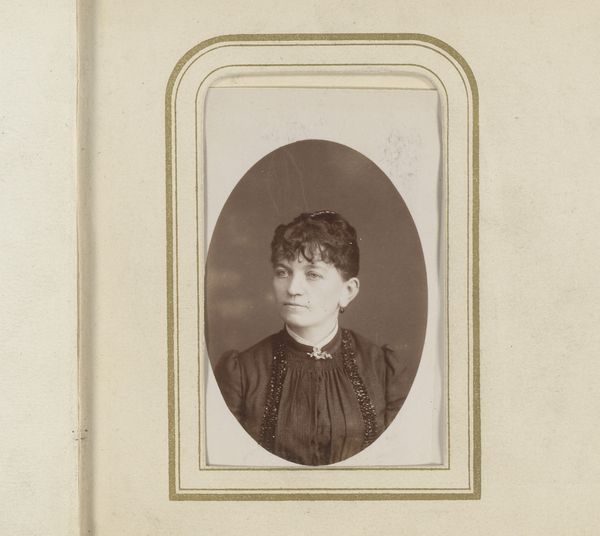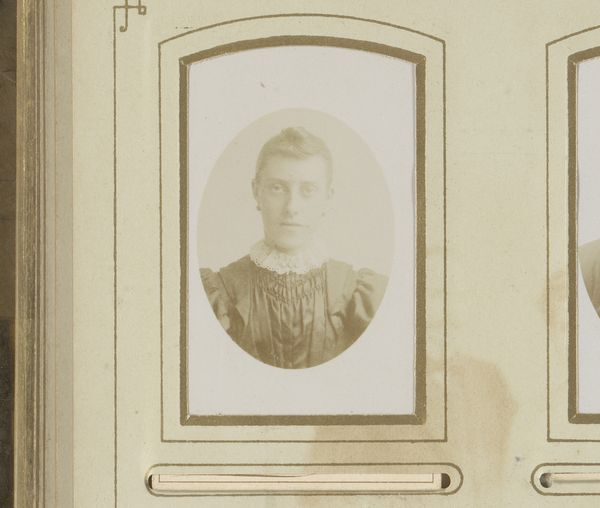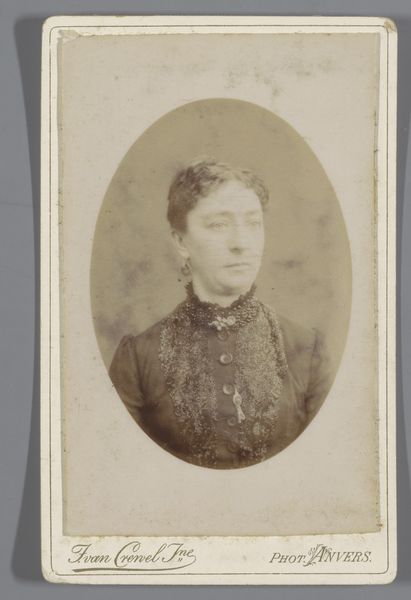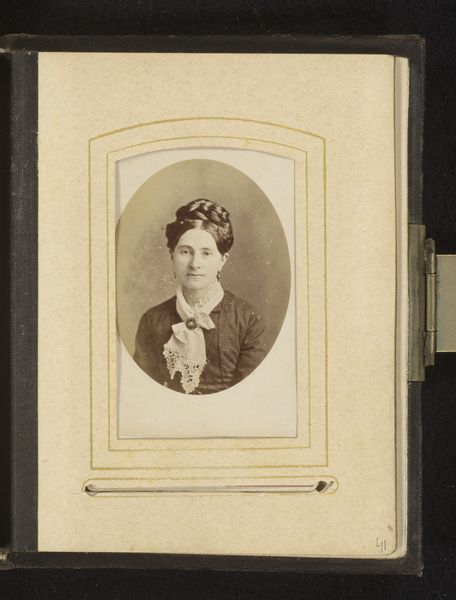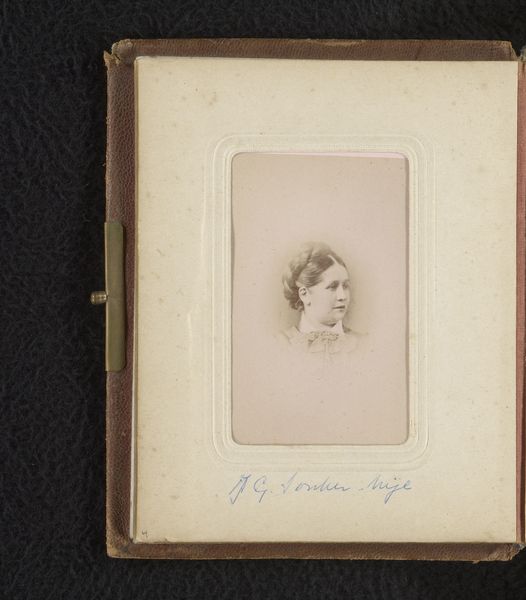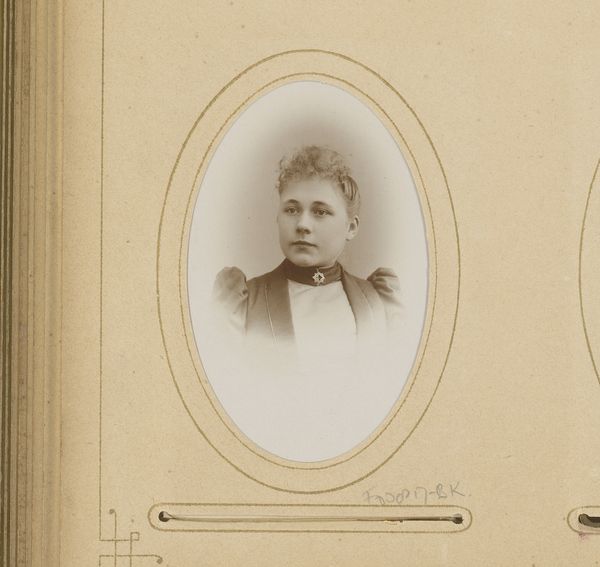
photography
#
portrait
#
photography
Dimensions: height 82 mm, width 50 mm
Copyright: Rijks Museum: Open Domain
Editor: Here we have an intriguing photographic portrait from somewhere between 1882 and 1900, "Portret van een jonge vrouw," by Henry O'Shea. There's such a striking contrast between the direct, almost defiant gaze of the young woman and the delicate floral and chivalric decoration surrounding her. It almost feels like two different narratives clashing. What stands out to you when you look at this piece? Curator: It’s precisely that clashing that interests me. The softness of the photographic portrait itself – almost desaturated – juxtaposed with these intensely decorated, historical, even patriarchal, elements brings up powerful questions about female representation at the time. Consider, whose gaze are we meant to prioritize? This woman’s? Or the assumed male gaze constructed by the battle scene and even the decorative flowers framing her, containing her? Editor: That's a really interesting point. It does feel like her image is being both displayed and confined simultaneously. Were these kinds of decorative additions common for portrait photography at this time? Curator: Yes, but often without this level of…let's call it 'narrative complexity'. These backgrounds weren't arbitrary; they were laden with meaning about status, taste, even aspirations. Here, though, the artist seems to be intentionally playing with how identity is constructed *through* those markers. It challenges the notion of a fixed, essential self. We can even think about what the addition of colour adds, emphasizing some of these narratives further. Does she seem at odds with the colour surrounding her? Or does it reinforce a social expectation of beauty and grace? Editor: I see what you mean! It really shifts my understanding of what a portrait could be back then – more than just a likeness, but a complex statement. I will never look at an old photograph the same way again. Curator: Precisely. This image shows that photographic portraiture wasn't simply capturing reality but actively constructing it, often in ways that reinforced – but also, perhaps, subtly challenged – the prevailing social and cultural norms of the time.
Comments
No comments
Be the first to comment and join the conversation on the ultimate creative platform.
